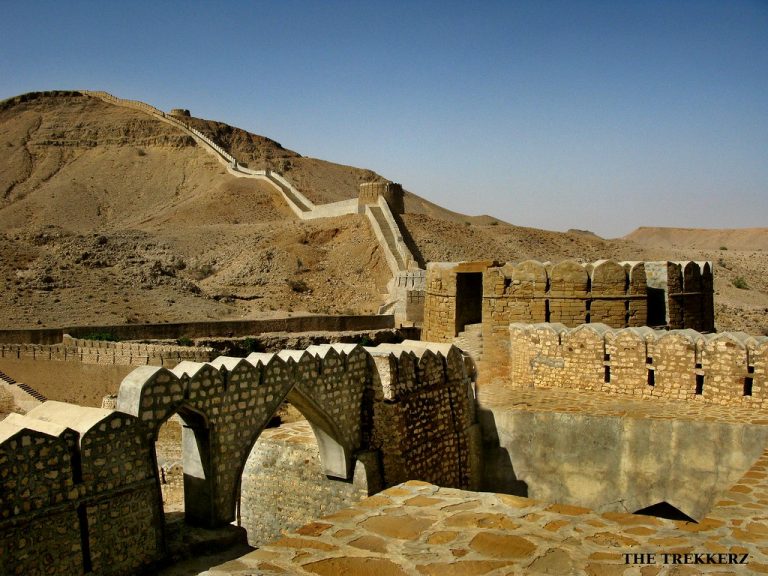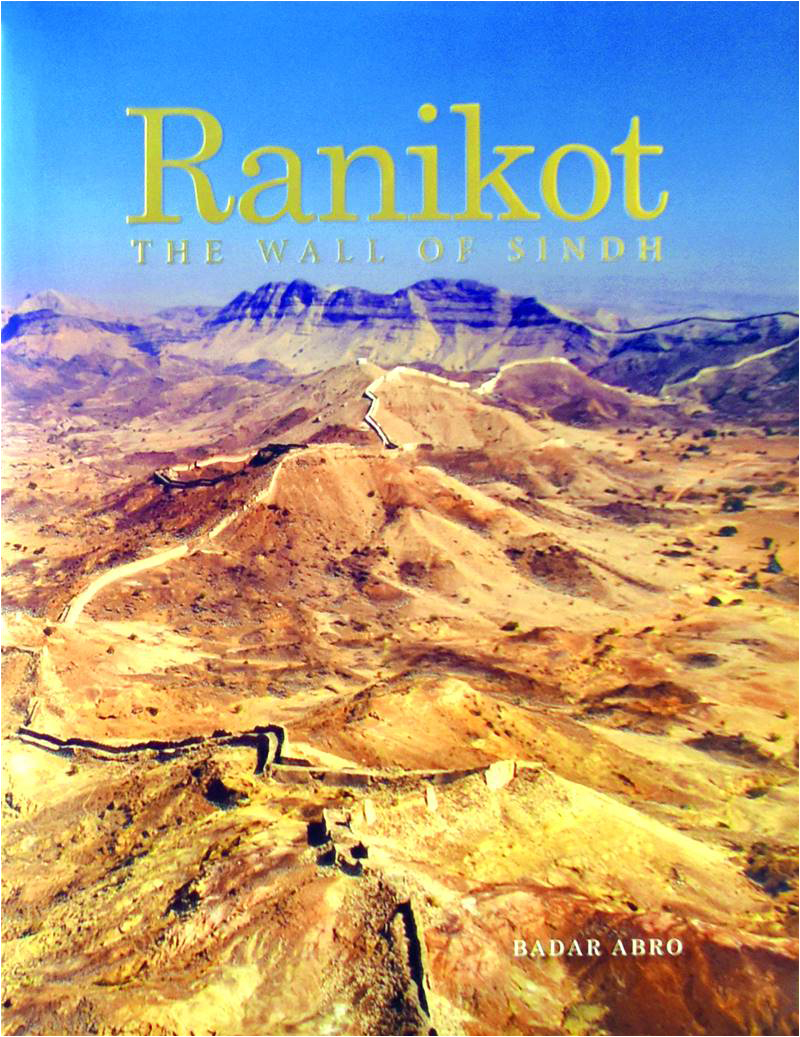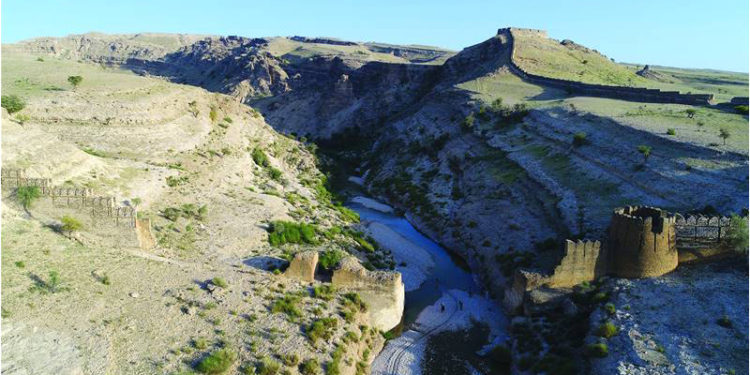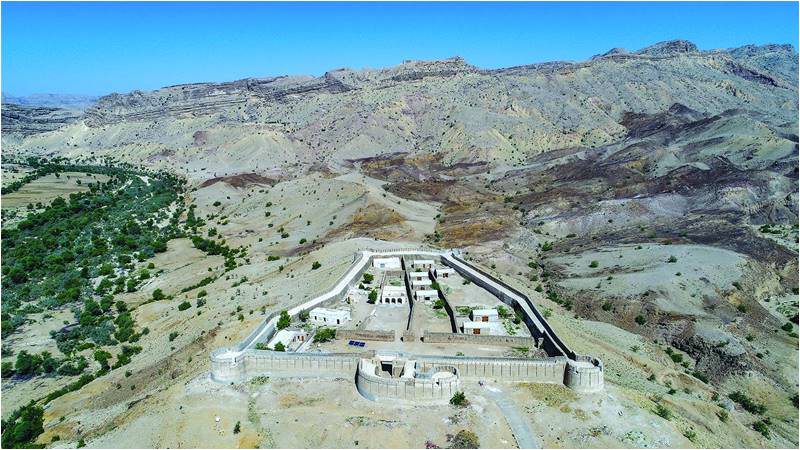
Very scant literature is available regarding the history and origin of the fort. Many theories have been advanced to trace the origin of the fort.
Zulfiqar Ali Kalhoro
Ranikot has always been captivated the visitors and researchers. However, very scant literature is available regarding the history and origin of the fort. Many theories have been advanced to trace the origin of the fort. Some scholars believe it to have been constructed by the Scythians (70 BC -46 AD). Others believe that it was built by the Arabs. Still others claim that fort was constructed in the 19th century by the Talpurs!
In recent years there have been very interesting publications on the history and heritage of Sindh, mostly published by Endowment Fund Trust for Preservation of the Heritage of Sindh (EFT). A majority of these books were written by the local scholars.
One of these, titled Ranikot: the Wall of Sindh by Badar Abro, a well-known scholar of Sindh, is a watershed in the history and archaeology of Sindh.
 Ranikot has four entrances or gates namely: 1) Sann Gate or Eastern Gate 2) Amri Gate or the North-Eastern Gate 3) Shahper Darwaza or the Southern Gate and 4) Mohan Gate or the Western Gate. There also exist three fortresses inside the Ranikot fort: namely Meeri Fortress which is located in the middle of the fort, Shahgarh Fortress which is perched on top of the hillock and Mohan Fortress.
Ranikot has four entrances or gates namely: 1) Sann Gate or Eastern Gate 2) Amri Gate or the North-Eastern Gate 3) Shahper Darwaza or the Southern Gate and 4) Mohan Gate or the Western Gate. There also exist three fortresses inside the Ranikot fort: namely Meeri Fortress which is located in the middle of the fort, Shahgarh Fortress which is perched on top of the hillock and Mohan Fortress.
The book by Mr. Abro consists of an introduction and eight chapters. There are also three annexures, a glossary, a bibliography and an index – which reflect the serious effort put into the work.
Mr. Abro has been visiting this formidable Ranikot Fort since 1985, as he writes in the introduction of the book. Since then, he frequently visited the sites and studied the fort thoroughly. In fact, Mr. Abro was the first local scholar who also traversed many valleys of the Kirthar, Bado, Bhit and Lakhi mountains ranges – where he also found rock art sites and other small fortresses and structures which led him to further focus and write this present book on the Ranikot Fort.

In the very first chapter, which is titled “Indus Timeline”, he has offered just that: a timeline from Mehargarh (7000 BC) all the way up to the creation of Pakistan in 1947 – which makes it easy for a reader to have some idea of the chronology of Sindh’s past. The second chapter is about yypes of forts/fortification. It discusses the six broad types of fortification in India and Pakistan. Mr. Abro believes that in order to know Ranikot, one first needs to know these types as such.
The third chapter “History of Forts in Sindh” is the most valuable part of the book as it provides interesting information on the prehistoric walled settlements and historic walled cities of Sindh. From the prehistoric walled site of Tharro in Thatta to Kohtrash Buthi in Thano Bula Khan to walled cities of Early and Mature Indus period Kotdiji and Mohenjodaro, Mr. Abro looks at each of the fortified cities of Sindh. Moreover, he also sheds light on the pre-Islamic fortified city of Brahmanabad.
He also describes the pre-Islamic fort of Sehwan, which now lies in a crumbling condition.
He then proceeds to look at the Islamic period forts of Bhanbhore, Kalan Kot, Rato Kot, Pucca Qila Hyderabad, Umarkot, Kotdiji and the fort at Thanbhan Wari Majid. Before he opens up the discussion on Ranikot, Mr. Abro deliberates on the architecture of each of the forts found in the prehistoric, pre-Islamic and Islamic periods in Sindh.
As such, the work reflects his profound knowledge of military architecture throughout the history of this region.

In subsequent chapters, discussing the fort, he also cites some other scholars’ research work. Some of the research papers that he cites and discusses raise important questions about the chronology and the architecture of the fort. In line with this scholarly work, Mr. Abro also believes that Ranikot is the ancient city of Nerun Kot.
Moreover, he goes on to raise an even more fundamental question: is Ranikot merely a wall/fortification or a full-fledged fort?
In any case, during his several years of fieldwork on Ranikot, he discovered prehistoric caves and other artifacts. He also found iron arrowheads which he believes are from the Scythian period.
He also discovered in the environs a number of coins from various periods. Some of these belong to the Habbarid period (854/55 – 910/11) in Sindh, as well as the later Mughal period.
In the course of his work, Mr. Abro found three inscriptions from Ranikot. One of the inscriptions he believes to date back to the Gupta period (4th to 5th century AD). Mr. Abro was the first local scholar who also discovered a number of Gupta Brahmi inscriptions in the Kirthar Mountain range, some of which he has included in his book Khirthar men Chitsali (Rock Carvings in Kirthar) providing a springboard for local scholars to follow his footprints.
He documents some of the masonry marks and compares them with those at the platform and the floor of the tomb of Mian Ghulam Shah Kalhoro (1757-1772). He rejects some of theories about Ranikot’s construction and association with the Talpur Mirs of Sindh. The great proponent of this theory was Dr. N. A Baloch, who as such believed that the fort was built by the Talpurs.
Mr. Abro’s detailed discussion of artifacts found from Ranikot reflects that the site dates back to pre-Islamic Sindh.
And as for myself, I believe that the site of Ranikot dates back to prehistory from where upper Paleolithic cores and blades were discovered during my own frequent trips to the area.
_________________
 Dr. Zulfqar Ali Kalhoro, an anthropologist, has authored 12 books including ‘Symbols in Stone: The Rock Art of Sindh’, ‘Perspectives on the art and architecture of Sindh’, ‘Memorial Stones: Tharparkar’ and ‘Archaeology, Religion and Art in Sindh’. He may be contacted at: zulfi04@hotmail.com
Dr. Zulfqar Ali Kalhoro, an anthropologist, has authored 12 books including ‘Symbols in Stone: The Rock Art of Sindh’, ‘Perspectives on the art and architecture of Sindh’, ‘Memorial Stones: Tharparkar’ and ‘Archaeology, Religion and Art in Sindh’. He may be contacted at: zulfi04@hotmail.com
Courtesy: The Friday Times Lahore